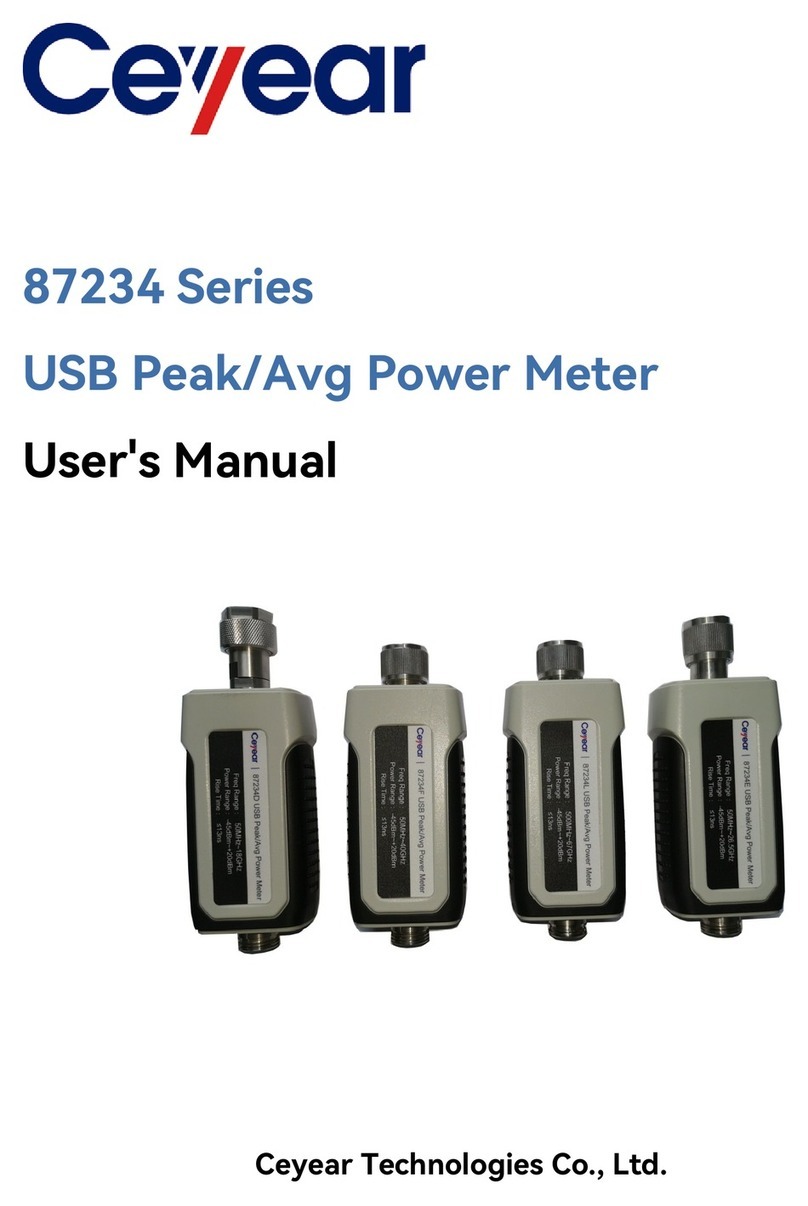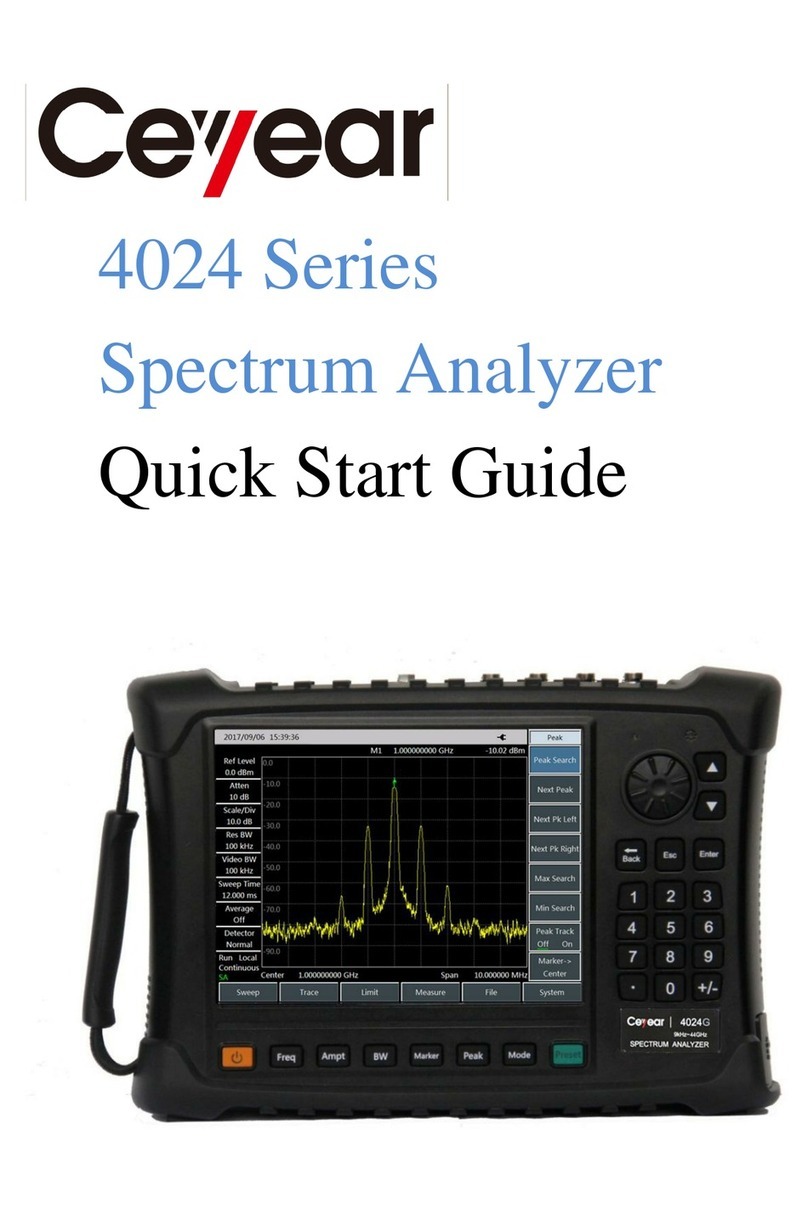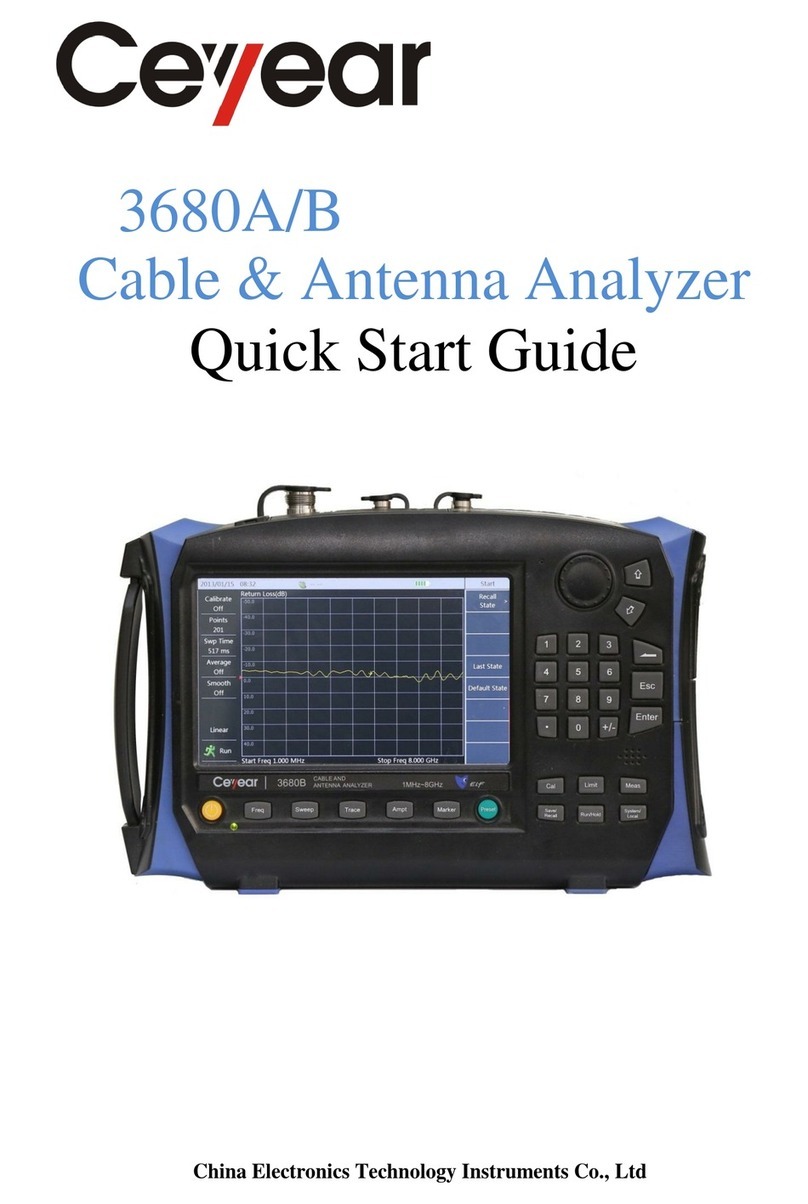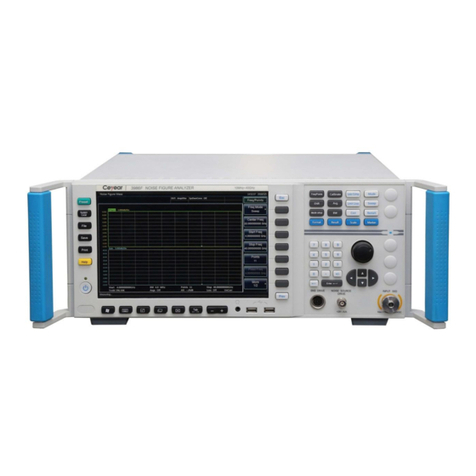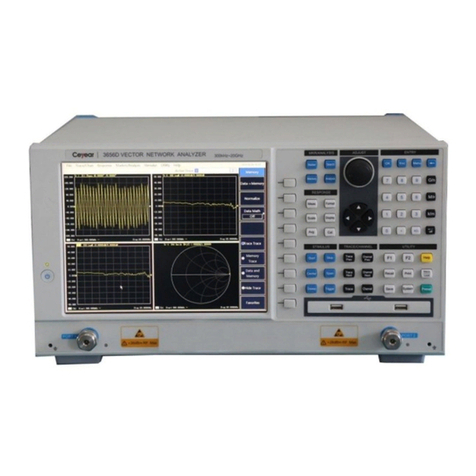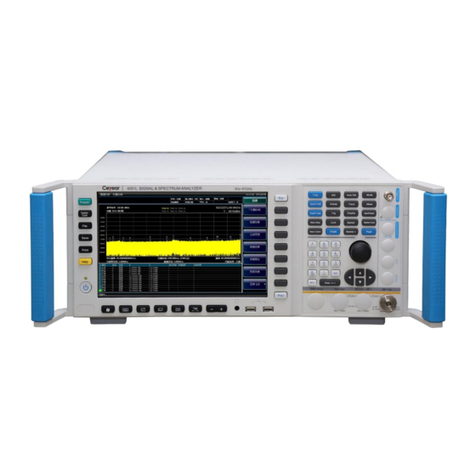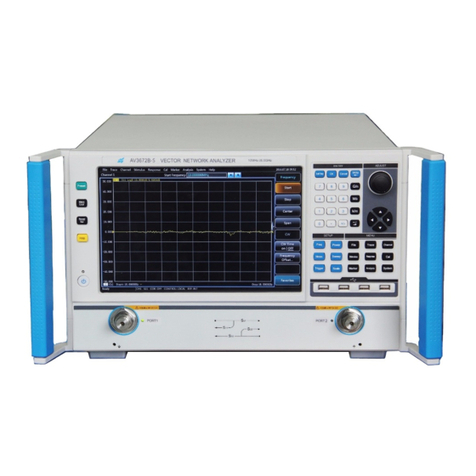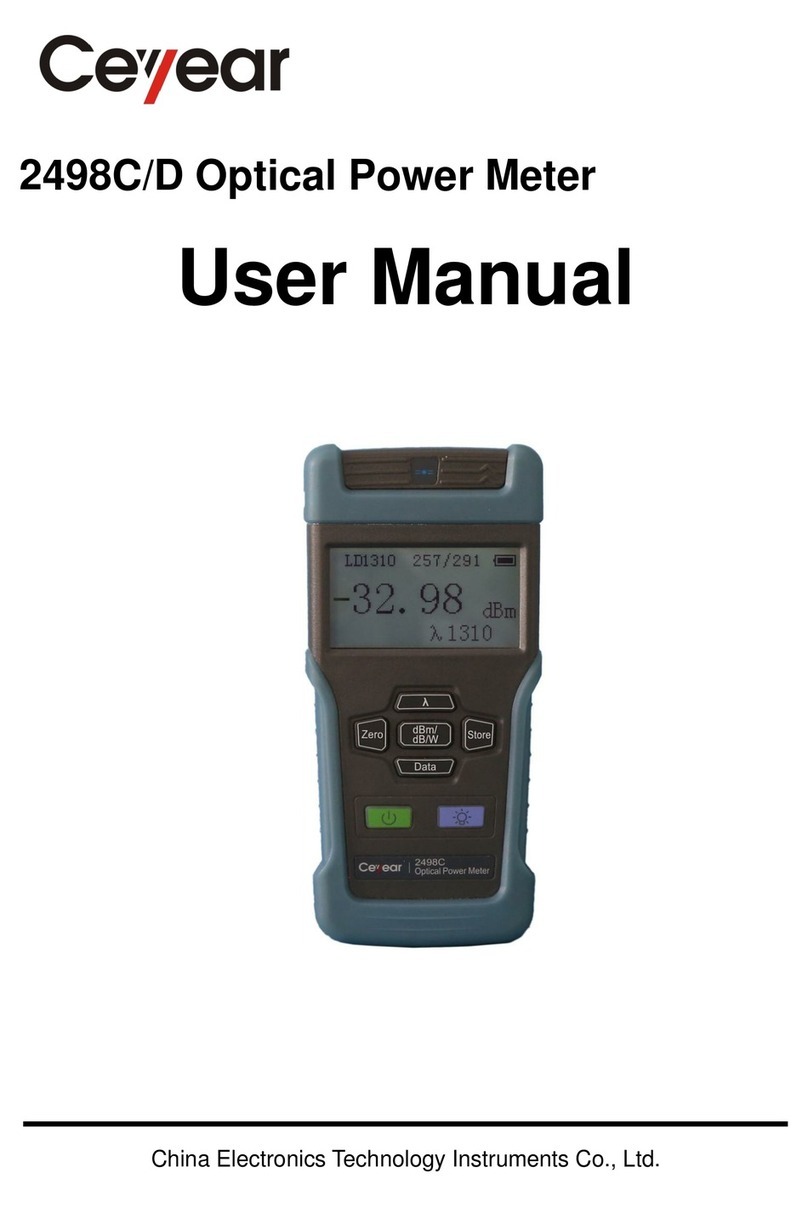
Foreword
Thank you for choosing the
2348 series microwave power
meter developed and
manufactured by China
Electronics Technology
Instruments Co., Ltd. (CETI).
Our product is high-end,
precise and sophisticated, and
embraces a high cost
performance among the
competitors of the same class.
We are devoted to providing for
you high-quality products and
first-class after-sales service
with your most concerns and
demands in mind. Our
consistent aim is providing
excellent quality and good
service, and this is our sincere
commitment for all users.
Manual No.
AV2.715.1009/1010/1005/1006
SC
Version
A.1 2017.11
China Electronics Technology
Instruments Co., Ltd.
Manual Authorization
This manual may be subject to
change without notice. CETI
reserves all the rights to the
final explanation for all the
information and terminologies
referred to in this manual.
This manual is the property of
CETI. Without CETI's
permission, any organizations
or individuals shall neither
alter/temper nor
duplicate/transmit this manual
for profits; otherwise, CETI
reserves the right to pursue any
liabilities therefrom.
Product Warranty
The warranty period of this
product is 18 months from the
date of delivery. Instrument
manufacturer will repair or
replace the damaged parts
according to the user's
requirements and actual
situation in the warranty period.
The specific maintenance
matters should be subject to
the contract.
Product Quality
Certification
This product is certified to fulfill
the standards indicated in this
manual from the day of delivery.
Calibration measurements
have been carried out based on
national standards. Related
information is available to the
user for reference.
Quality/Environmental
Management
The quality and environmental
management systems have
always been implemented
during development,
manufacturing and test of this
product. China Electronics
Technology Instruments Co.,
Ltd. is properly qualified and
certified by ISO 9001 and ISO
14001 management system
standards.
Safety Precautions
CAUTION indicates an
important information rather
than danger. It reminds the
user to be cautious of a certain
operation process, operation
method or the similar. Failure to
follow the rules or operate
correctly may cause the
damage to the instrument or
loss of important data. The
conditions indicated by
CAUTION should be fully
understood and met before the
next operation.
NOTE indicates an information
prompt. It reminds the user to
pay attention to the instrument
or a certain operation process,
operation method or the similar,
so as to guide the instrument
operator to correctly use the
instrument.
